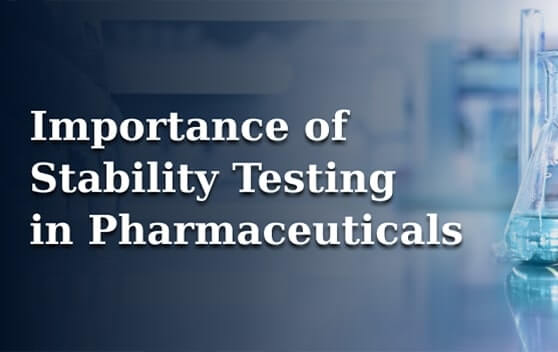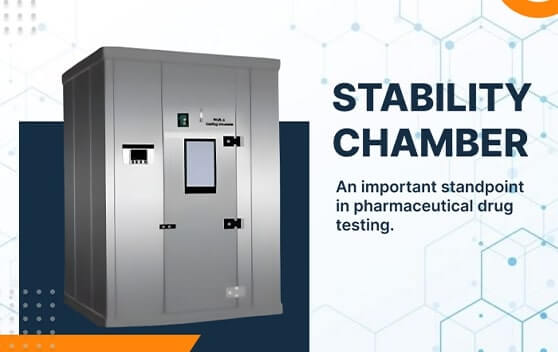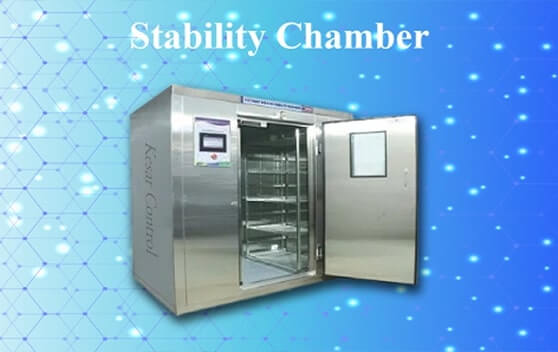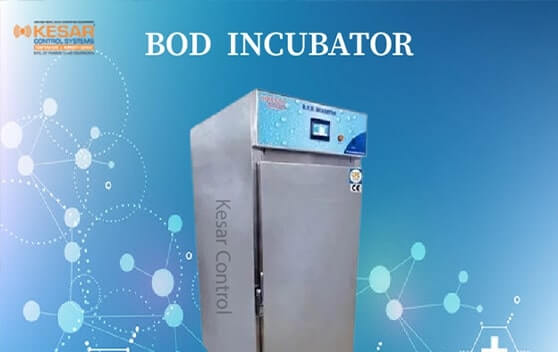The Future of Stability Testing: Trends to Watch Out For
The pharmaceutical industry is continuously evolving, and one of the critical components of ensuring the safety and efficacy of drug products is stability testing. Did you know that nearly 10% of drug recalls are due to stability-related issues? Stability testing is therefore not just a regulatory requirement but an essential step in ensuring the safety, potency, and overall quality of drugs throughout their shelf life. As the pharmaceutical sector faces rapid advancements in technology, staying ahead of these changes is crucial. In this blog, we will explore five groundbreaking trends that are shaping the future of stability testing.
Trend 1: IoT-Driven Stability Chambers
How IoT Transforms Stability Chambers
The integration of the Internet of Things (IoT) in stability testing is revolutionizing how pharmaceutical companies monitor and control the conditions in which their products are tested. IoT-enabled stability chambers offer precise environmental control with real-time monitoring, making it easier to ensure consistent conditions like temperature, humidity, and light exposure. These features are critical because even slight deviations can compromise the integrity of a drug.
Key Benefits of IoT-Enabled Chambers
-
Data Accessibility: IoT devices enable remote access to real-time data, allowing quality assurance teams to monitor conditions from anywhere. This level of accessibility ensures that any issues are caught early.
-
Predictive Maintenance: IoT sensors can predict potential failures in equipment, allowing for timely interventions before major breakdowns occur. This reduces the risk of equipment failure during crucial testing phases.
-
Cost Savings: The efficiency of IoT technology leads to reduced energy consumption and maintenance costs. Manufacturers can also improve testing accuracy and reduce the frequency of testing failures, leading to significant cost savings.
By embracing IoT-driven stability chambers, pharmaceutical companies align themselves with the smart factory initiatives that are becoming increasingly popular in the industry. If you're looking for an advanced walk-in stability chamber manufacturer in India, Kesar Control is a leading provider of these cutting-edge solutions.
Trend 2: Green Technology for Sustainable Testing
The Shift Toward Energy-Efficient Equipment
Sustainability is more than just a buzzword; it is now a global priority. As environmental concerns rise, the pharmaceutical industry is focusing on reducing its carbon footprint by adopting green technologies in their stability testing processes. Energy-efficient equipment is a key focus, and stability chambers are no exception. The push for sustainable manufacturing practices has resulted in innovations that minimize energy use while ensuring the same high level of reliability in testing conditions.
Innovations in Green Technology
-
Low-Power Compressors: Modern stability chambers are equipped with low-power compressors that consume far less energy compared to traditional models, without compromising temperature control.
-
Better Insulation Materials: New insulation materials help to maintain the desired testing conditions more efficiently, reducing energy loss and improving the overall energy consumption of stability chambers.
-
Cost Savings: The efficiency of IoT technology leads to reduced energy consumption and maintenance costs. Manufacturers can also improve testing accuracy and reduce the frequency of testing failures, leading to significant cost savings.
These advancements not only contribute to lowering operational costs but also help pharmaceutical companies meet global sustainability goals. By incorporating these green technologies, manufacturers are making a positive impact on the environment. For businesses seeking more sustainable testing equipment, humidity chambers and cold chambers from Kesar Control offer innovative solutions that reduce energy consumption while maintaining optimal testing conditions.
Trend 3: AI-Powered Analysis and Automation
Enhancing Accuracy with Artificial Intelligence
One of the most exciting developments in stability testing is the use of artificial intelligence (AI). AI-powered systems can analyze large datasets far faster and more accurately than human testers. With advanced machine learning algorithms, these systems can identify hidden patterns in data that might otherwise go unnoticed, making predictions more reliable. This enhances the overall accuracy of stability tests, ensuring better compliance with regulatory standards.
Benefits of AI in Stability Testing
-
Improved Accuracy: AI tools analyze testing data to detect patterns and anomalies, enhancing the precision of the testing process. This reduces the likelihood of human error and ensures that results are reliable.
-
Reduced Manual Intervention: Automation reduces the need for constant human supervision, allowing staff to focus on other important tasks while the AI system performs tests and processes data.
-
Machine Learning: AI-powered systems can learn from long-term data and continuously improve the predictive accuracy of results, making it easier to forecast stability outcomes.
As the industry moves towards automation, AI is also transforming photostability chambers. are used in stability testing, reducing errors and improving efficiency.
Trend 4: Stricter Regulatory Standards Worldwide
Global Regulatory Changes
As the pharmaceutical industry continues to expand globally, regulatory requirements are becoming more stringent. International organizations like the International Council for Harmonisation (ICH), the U.S. Food and Drug Administration (FDA), and the World Health Organization (WHO) have introduced stricter standards regarding the safety and efficacy of pharmaceutical products. Manufacturers must ensure that their stability testing equipment complies with these guidelines to ensure the consistency and safety of their products.
Key Considerations for Compliance
-
ICH Compliance: Stability testing chambers must meet the requirements set by the ICH to ensure that pharmaceutical products retain their potency and safety during their shelf life.
-
FDA and WHO Standards: These organizations mandate that pharmaceutical manufacturers adhere to strict testing protocols. As regulations evolve, manufacturers must keep their equipment updated to remain compliant.
For pharmaceutical manufacturers looking to meet global compliance standards, investing in advanced stability chambers is essential. Kesar Control's cutting-edge chambers are designed to comply with the latest ICH, FDA, and WHO regulations, ensuring the safety and reliability of your products.
Trend 5: Tailored and Modular Chamber Designs
The Need for Custom Solutions
As the pharmaceutical industry becomes more diverse, there is an increasing demand for tailored and modular stability chambers. Custom solutions allow manufacturers to meet specific testing needs, whether that involves different environmental conditions, sample volumes, or specialized testing criteria. Flexibility is key to maintaining efficiency in testing while ensuring that chambers are optimized for each unique product.
Benefits of Modular and Tailored Designs
-
Flexibility: Modular stability chambers can be easily customized and adapted to different testing environments and sample sizes, making them highly versatile for pharmaceutical manufacturers.
-
Cost-Efficiency: Custom-designed solutions allow manufacturers to avoid the unnecessary cost of purchasing multiple types of chambers. One tailored chamber can be used for various testing needs, reducing overall investment.
Real-world examples of these tailored solutions can be found in photostability chambers, which are customized to meet specific product testing requirements, ensuring accurate and reliable results. With modular systems, pharmaceutical companies can continuously adapt to meet the growing demands of the market.
Conclusion
The future of stability testing is being shaped by rapid technological advancements that enhance efficiency, reduce costs, and ensure compliance with global regulatory standards. From IoT-driven stability chambers that offer real-time monitoring to AI-powered automation tools that improve accuracy, these trends are setting the stage for a more efficient and sustainable testing process. Manufacturers looking to stay competitive must invest in modern equipment, such as walk-in stability chambers, cold chambers, and humidity chambers, to ensure the continued safety and efficacy of their pharmaceutical products. By embracing these trends, manufacturers can meet the evolving demands of the industry and maintain the high standards required for drug stability.







